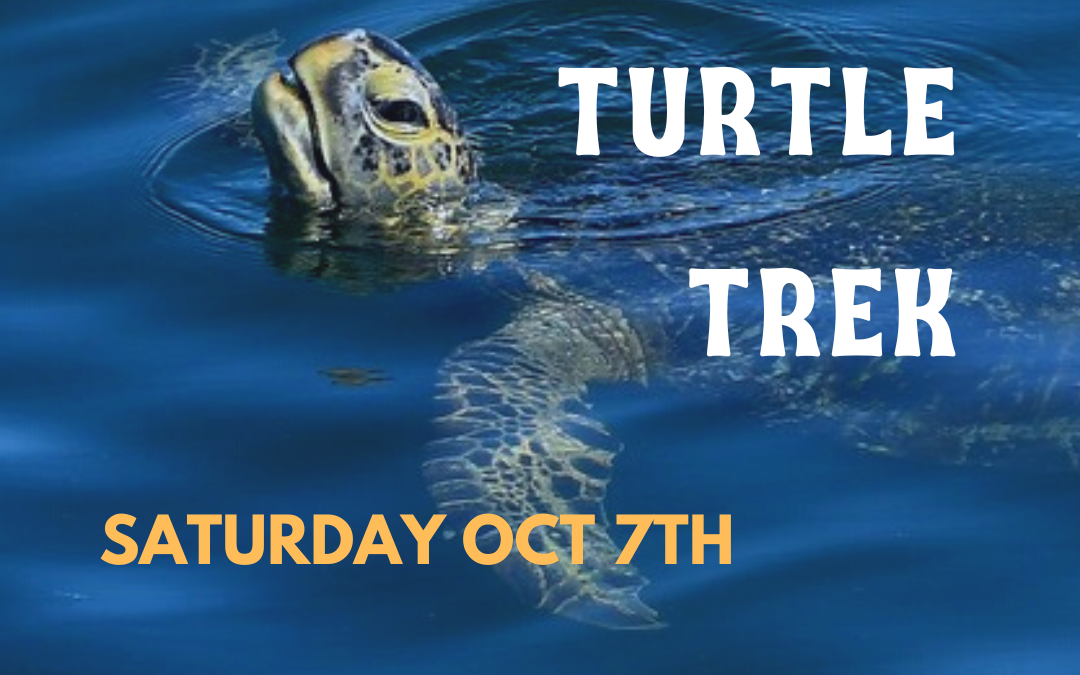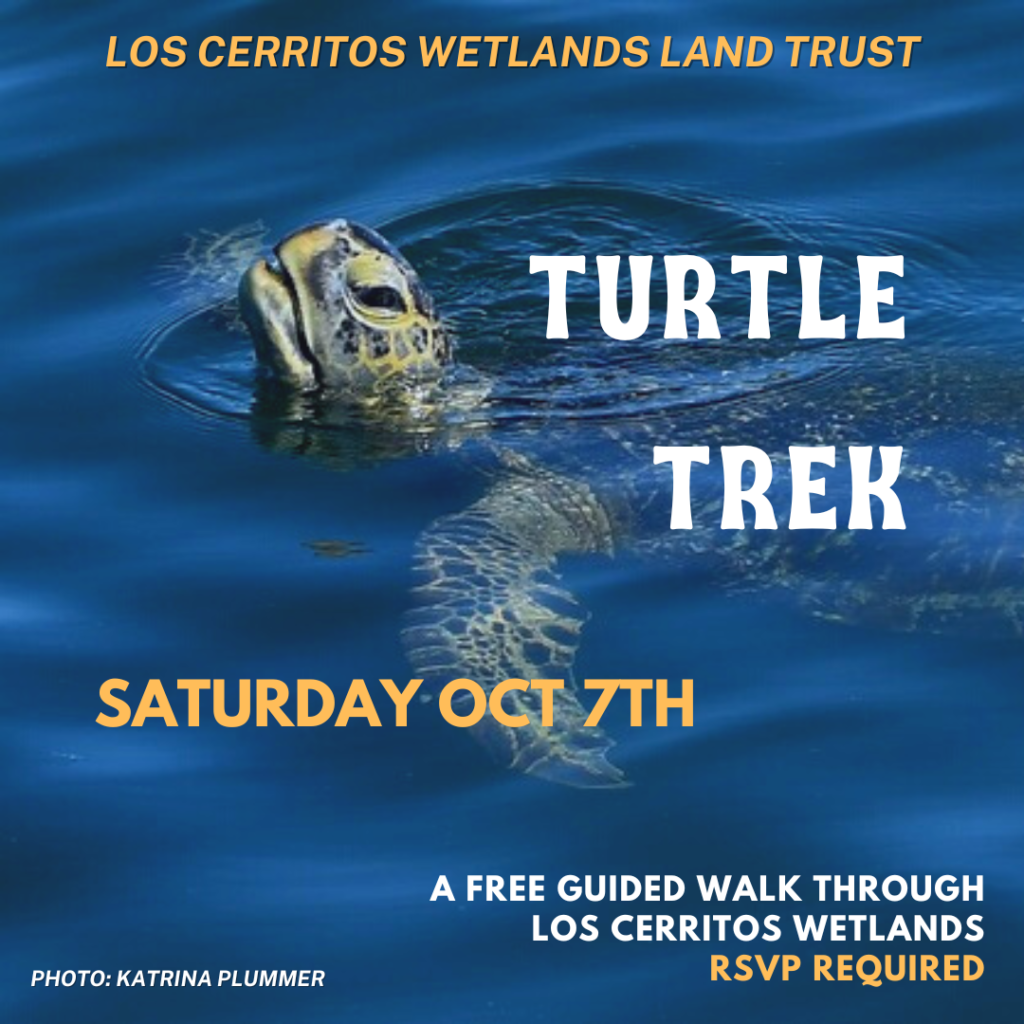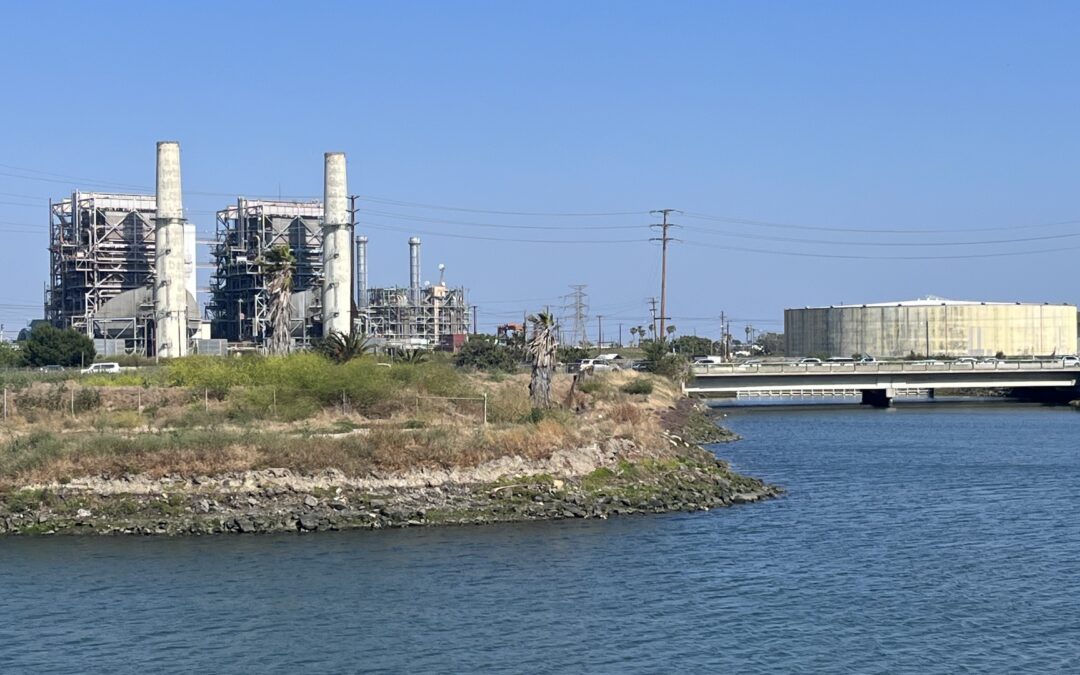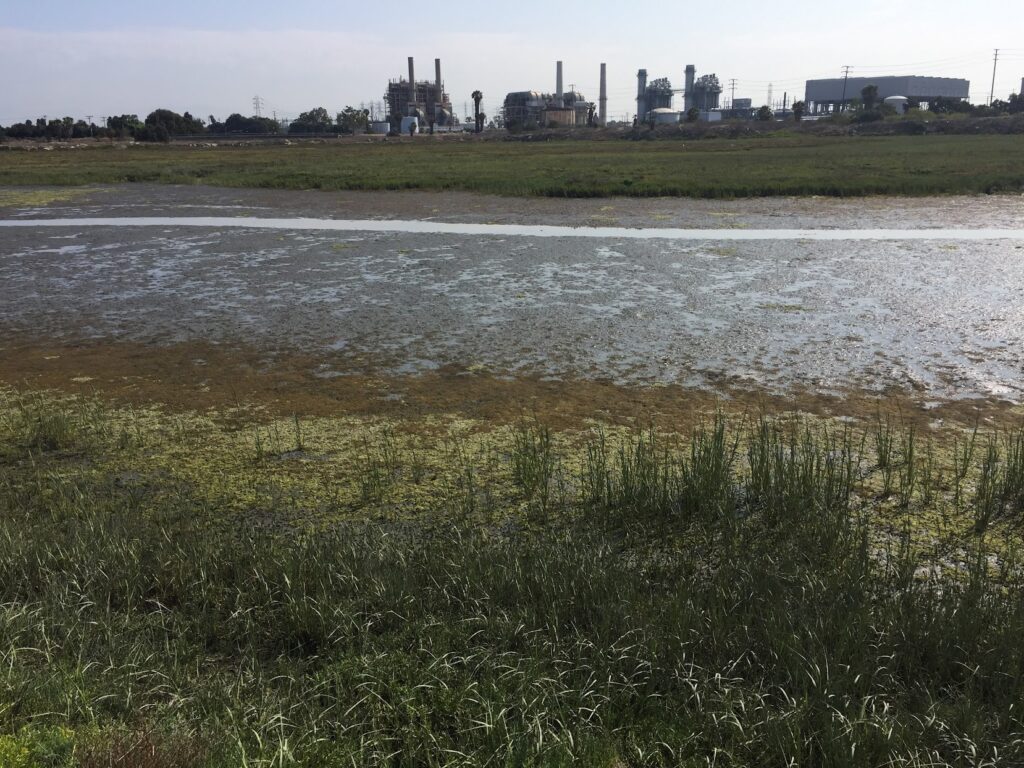
Our next nature walk will be the Turtle Trek! Hope you can join us.

| Join us to trek for Sea Turtles in the San Gabrial River on Saturday, October 7th. You will observe sea turtles and interesting wildlife like egrets and perhaps a great blue heron or two. Environmental educators from Tidal Influence will lead attendees on a beautiful walk along the levy of the San Gabriel River, which bisects Los Cerritos Wetlands. Attendees will walk through Los Cerritos Wetlands to a spot along the San Gabriel River where the sea turtles love to hang out. For part of our tour, we will view and discuss the Zedler Marsh ecosystem while keeping an eye out for local wildlife. Much of our walk will take us through the Signal Hill Petroleum oil operations, where walk attendees will learn about the history of oil extraction and its impact on the wetlands. We will stroll past Calloway Marsh, take the PCH bridge over to the western levee, and walk past privately and publicly owned wetlands on our way back to our meeting spot. WHAT: Turtle Trek at Los Cerritos Wetlands. WHEN: Saturday, October 7th, 2023, at 8:00 AM sharp! The parking lot gate will open at 7:45 a.m. and close at 8:10 a.m. No latecomers can be admitted for the tour, and all participants must stay for the entire tour, which will end by 10:00 a.m. Kids are welcome, but they must be closely supervised and able to walk for 2 hours without needing to turn back. Closed-toe shoes are required! WHERE: Meet in the driveway/parking area at the corner of 1st Street and PCH in Seal Beach. Please wear close-toed shoes, and an adult must accompany kids under 16. For more information or to RSVP visit our Eventbrite link or send me an email. |
 Also on October 7th, from 10:30 AM-12:30 PM, you are invited to join community-based wetlands restoration. Los Cerritos Wetlands are being restored and made beautiful because of hard-working folks who volunteer their time to remove invasive plants and other weeds and plant in their place “habitat friendly” native plants. It’s fun, fulfilling and it requires no special skills or experience–just enthusiasm and a willingness to learn. Your contribution of time and effort is vital to the success of the restoration and would be greatly appreciated! For more information or to RSVP email iwanttohelp@tidalinfluence.com. |









